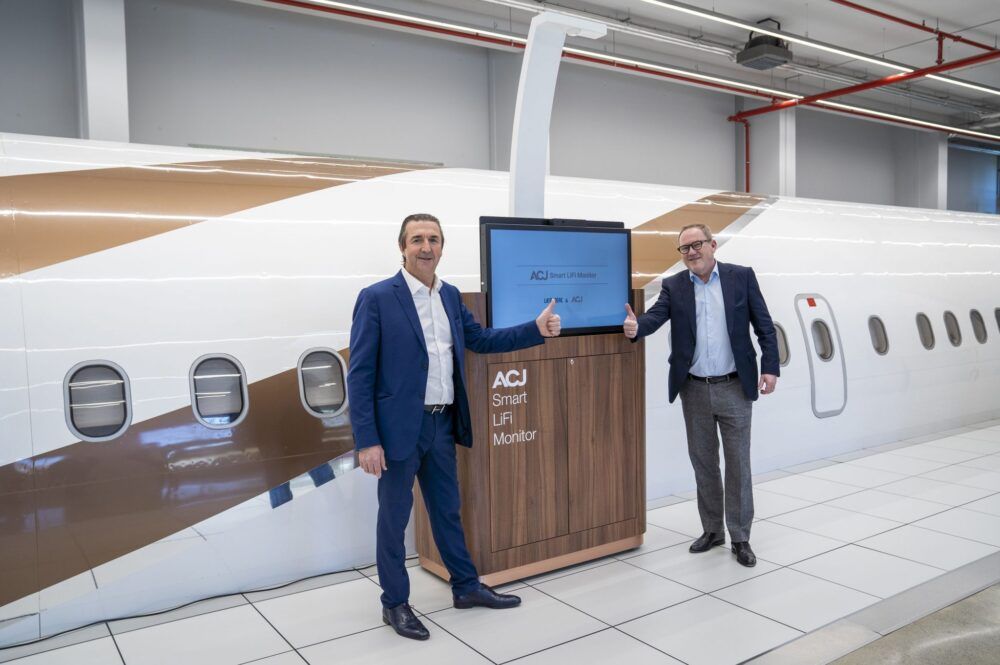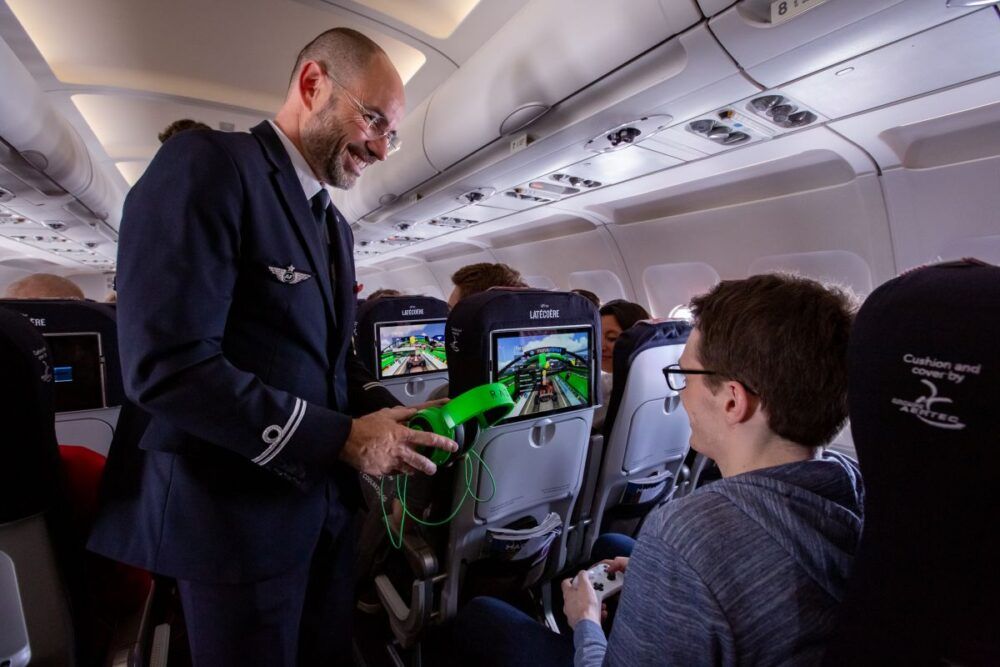Airbus is bringing a hotly anticipated new connectivity product to its corporate jets market. In partnership with Latécoère, ACJs will soon feature LiFi – a WiFi system that uses beams of light to provide connectivity. Airbus will be the first manufacturer to embrace this technology, and hopes to have it available to install by the end of this year.
ACJ to offer LiFi by the end of the year
Airbus Corporate Jets (ACJ) and Latécoère have teamed up to bring the latest in inflight connectivity technology to the world of corporate jets. The pair have recently signed a partnership agreement to develop a new IFE technology, known as The ACJ Smart LiFi Monitor.
LiFi, standing for Light Fidelity, is a new and exciting wireless connectivity solution that uses beams of light to send and receive data. With this agreement, Airbus will be the first aircraft manufacturer to offer LiFi technology, which it intends to do both as a line fit and as a retrofit option.
According to Airbus, the ACJ Smart LiFi Monitor “provides a unique entertainment experience and was designed to be an easy plug and play solution”. It is essentially a smart 4K monitor, which offers WiFi, Bluetooth and LiFi connectivity to customers of its corporate jet products.
Airbus hopes to have this technology ready to deploy before the end of the year. It says that it will enable corporate jet customers to have a connectivity experience that is just as it would be at home. In tests, LiFi has been shown to be capable of speeds of up to 100 Gigabits per second, something that will be very attractive for ACJ customers.
What is LiFi?
Although it’s not a widely recognized product, LiFi has been around for more than a decade. Whereas the more well-known WiFi makes use of electromagnetic waves to transmit data, LiFi uses light. In a nutshell, data connectivity would be beamed to passengers via a light source, such as an LED bulb.
The benefits of LiFi are largely around security and reliability. Because the data is only contained in the light, it cannot pass through walls, making it more secure. It also is less likely to interfere with sensitive equipment, as it doesn’t use radio frequencies in its transmissions.
With far less cabling to install than a WiFi-based system, it’s also much lighter, which is good for fuel consumption and carbon footprints. The signal is transmitted through lightweight fiberoptics, and could be engineered to use either the reading lights above passengers’ heads, or a centrally located ‘bulb’ transmitting light in the infrared spectrum.
Latécoère previously tested its LiFi technology in October 2019, on an Air France A321, during a commercial flight. The service, from Paris Orly to Toulouse, had Latécoère’s LiFi installed at 12 seats on the plane. Gamers competing in the “Air France Trackmania Cup” were invited onboard to put the technology through its paces.
The result was mixed, with the service reportedly performing ‘reasonably well’, although Latécoère admitted it was not perfect. The main issue was with the ceiling-mounted light transmitters, which apparently sometimes lost their aim. Latécoère suggested this was not an issue with the technology, per se, but more to do with the misalignment of the transmitter.
Since the trial, Latécoère has been relatively quiet about any rollout to commercial flight. However, this new initiative to begin offering the technology on the ACJ product line is a small but significant step. If all goes well, we could see the technology on future commercial aircraft.
This article is brought to you by Simple Flying Connectivity, a new category on Simple Flying dedicated to inflight connectivity. Click here to read all of our inflight connectivity content.




